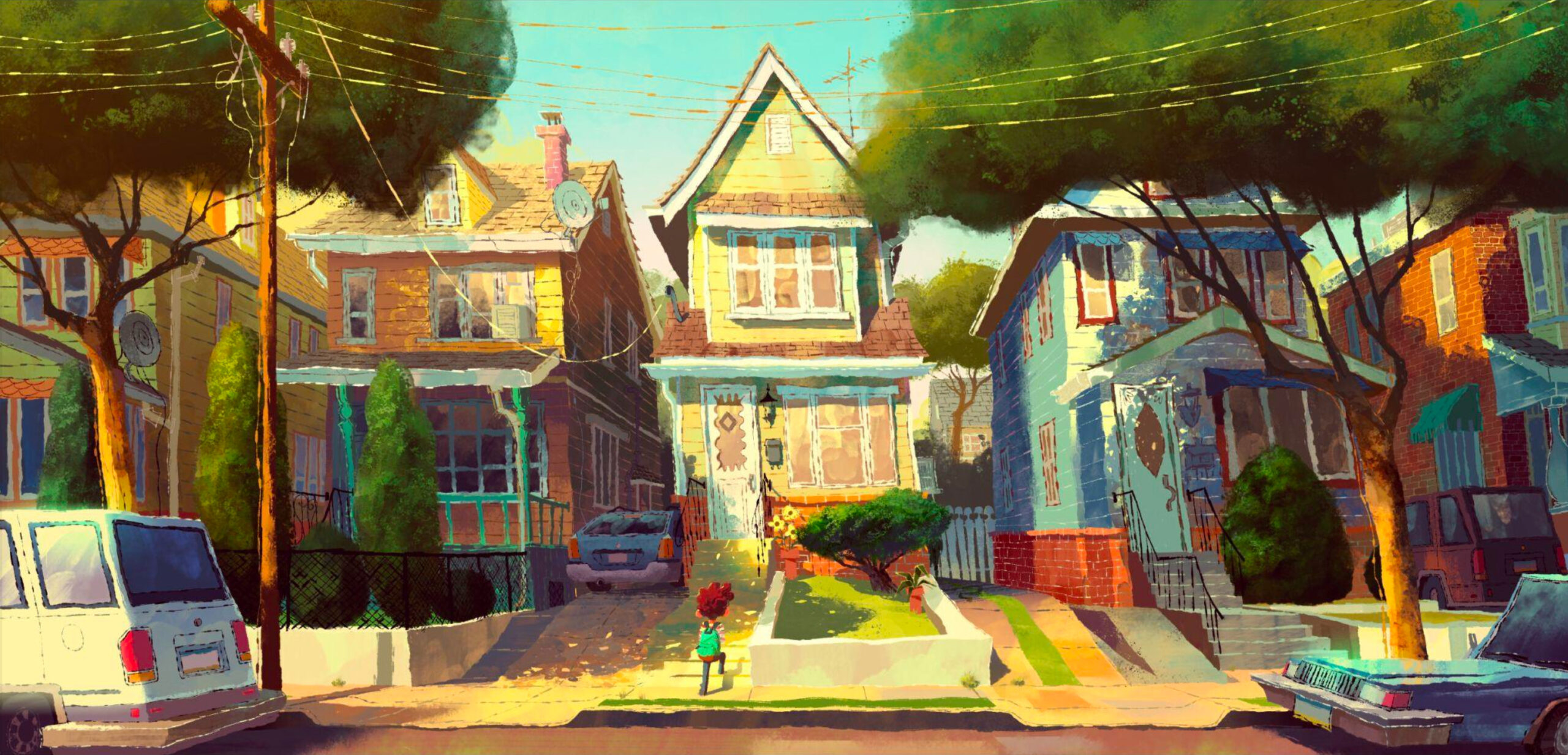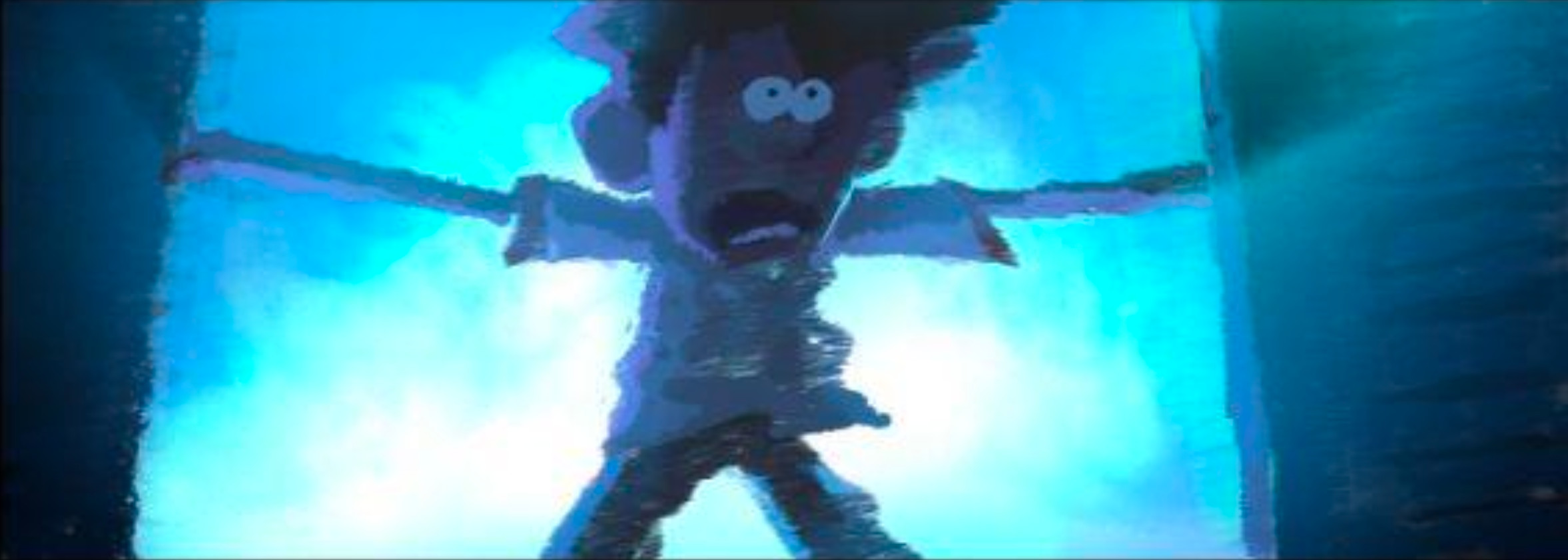

Bring On The Night: A Detailed Look At The Stunning Lighting And VFX Work In Dreamwork’s ‘Orion And The Dark’
It is a dark night of the soul for timid middle-schooler Orion (voiced by Jacob Tremblay) in the Netflix release Orion and the Dark, which hits the platform this Friday, February 2.
Adapted by screenwriter Charlie Kaufman and director by Sean Charmatz from Emma Yarlett’s 2014 children’s book, the Dreamworks Animation production is a witty and phantasmagorical adventure that follows the pantophobic youth, on the eve of an academic field trip, when a mischievous shadow figure named Dark (Paul Walter Hauser) whisks him off to meet a gaggle of ornery Night Entities (including star-turns by Angela Bassett, and Natasia Demetriou) and their sunny nemesis, Light (Ike Barinholtz).
To help transform Yartlett’s watercolor renderings into an animated feature, Charmatz, production designer Tim Lamb, and art director Christine Bian turned to visual effects supervisor M. Scott McKee, a former cg supervisor and lighting director with whom Lamb had collaborated on Dreamworks’ Trolls franchise.
“My role as the visual effects supervisor is to work with the production designer, art director, and director to find a visual language,” says McKee. “We wanted this to be timeless – different from what’s expected of cg these days, which is hyper-realistic, supersaturated, lots of contrast – and leaned more on illustrative design.”
Visual references for early scenes in Orion’s school and home in 1990s Philadelphia included early Wes Anderson movies and the midwestern suburbia of director Jason Reitman’s Juno. “We wanted to get back to a cinematic time before digital took off and technology advanced so much, both in cinema and computer graphics,” comments McKee.
“There’s a different style to films in the mid-1990s when films relied on what they shot and processed in the laboratory,” he continues. “At the beginning of the movie, we kept our tones muted and made references to that period. We put an old Apple computer in the corner of Orion’s bedroom. We also referenced the charming watercolors of Emma Yartlett’s illustrations. To [emulate that] illustrative style and the style of early 2d animation, we used irregular line work to break up hard objects. In compositing, we also broke up edges and softened character edges using transparency.”


Dreamworks Animation set the look for production designs by working with Mikros Animation in India, which handled the majority of the film in its Bangalore studio. Jungler in Paris assisted animation in a couple of key sequences.
The character of Dark, bringer of night, sprang from a screenplay line that described the specter as an ‘inky cloak.’ “Dark is a scary character, but he had to be likable,” observes McKee. “He’s a spirit, so we played with opacity on his edges. When light affects him, he becomes more transparent, and to make him an ‘inky’ character, we broke up his edges.”
Dark’s hulking silhouette allowed expressive character poses punctuated with glow-in-the-dark teeth and eyes that gave the character an Alice in Wonderland Cheshire Cat whimsy, combined with inky qualities derived from physical elements.
“They had this idea before I joined the film, and I ran with it,” recalls McKee. “We spent countless hours recording ink drops on paper. We used a [Sony] a7R camera, shooting down, with different macro lenses. We’d take a drop of ink and then record it. It was tricky because every drop did something different. The way ink expands, ebbs, and flows on paper is amazing, but that can last as long as five seconds, so we took that visual language and art-directed it. We used the footage as a reference and sometimes used bits of footage in composites. We also built a 2d template and created procedural effects that we could control. It was a lot of texture projection, but it started with real ink.”
When Dark takes flight with Orion, effects artists used volumetric effects to depict ink trails through space and swooping through a forest. “The inky leading edge was always some form of projection,” adds McKee. “In Dark’s first flying scene, we wanted it to feel like he was starting a journey, like an artist starting a painting with a brushstroke. That effect was a little bit more 2d and illustrative. We felt that our audience is sophisticated enough to understand a mix of styles, including 2d animation and Orion’s journal sketches peppered through the movie.”

In the film, Orion meets five Night Entities – luminescent Dreams (Bassett), fuzzy Sleep (Demetriou), buzzy Insomnia (Nat Faxton), fluffy Quiet (Aparna Nancheria), and cranky robot Unexplained Noises (Golda Rosheuvel). The characters drew inspiration from objects in the bedroom of a sassy little girl, Hypatia (Mia-Akemi Brown).
“Dreams is like a lamp that projects colored stars,” explains McKee. “Sleep is like a stuffed animal that’s been loved so much. Unexplained Noises is like a Sony Walkman from the 1980s – my favorite, the Sportsman. Insomnia is frenetic, and his job is to keep people awake, so it’s like he’s on coffee.” Each Night Entity emits distinctive particle trails. “Insomnia emits numbers, like an alarm clock. Sleep emits ‘z’s that pop up, drift, and dissipate. All of the Night Entities glowed, with glittery, sandy textures floating around. We generated those effects in [Side Effects] Houdini.”
One of the biggest challenges for visual effects was the depiction of scenes overflying cities as the division of night and day spreads across the globe. McKee assembled a matte painting team at DreamWorks to handle epic aerial shots, taking cues from Emma Yarlett’s book, and then focused on transitions between Dark’s fluid ink effect and Light’s golden illumination.


The transition from dark to light is dramatized most poignantly in a scene where the bringer of night becomes disheartened and allows a sunrise to consume him. The filmmakers transitioned from night to sunrise using volumetric lighting and then generated dazzling brightness as Dark’s rival, Light, floods the world with radiance.
“Light is at first beautiful, happy, punchy, and saturated,” states McKee. “After Dark dissolves, things become very apocalyptic and smoggy. That was one of our hardest sequences. We wanted Light to feel overexposed and oppressive yet still feel the environment around him. We desaturated characters, and that was another challenge – how to show the character of Light against a big bright background? We treated Light like an incandescent light bulb, with a glow inside his chest. And then, we used that color to separate him from the extreme whites.”
Orion travels through dream environments, including a pink liquid realm of suspended animation where Hypatia attempts to rescue the boy from paralyzing dreams. The production rendered dormant Orion in desaturated tones, while Hypatia was more saturated in pastel shades. The oozing pink environment took inspiration from the oily fluid dynamics of vintage Hasbro Arts & Crafts tie-dye kits.


The film’s finale, where characters struggle against a swirling vortex, was one of several nods to the films of Steven Spielberg. “The first thing we thought of for that scene was Poltergeist,” notes McKee, referring to Spielberg’s 1982 haunted house production. “We brought in images from Poltergeist and Close Encounters of the Third Kind, showing how light responds, backlighting [characters], and that’s how we tied in those effects. Earlier, when [Orion and Dark] are in a forest, we used imagery from E.T. as a reference. Spielberg was a huge influence.”
The creation of magical effects that felt tactile and relatable was key to articulating themes of a little boy embracing his fears. “It was probably the most important thing that we focused on for the entirety of the project,” concludes McKee. “This was not so much of a hyper-real fuzzy style but more of the 2d illustration style. That all stemmed from Tim and Christine’s designs – Mikros delivered final images very close to the key art. It was an amazing international team.”

.png)